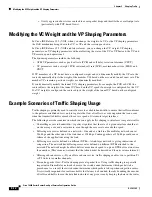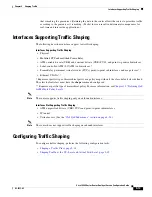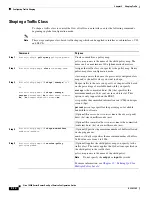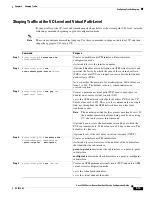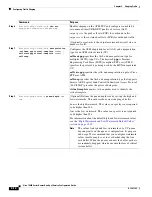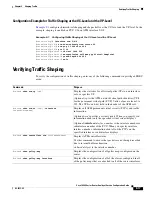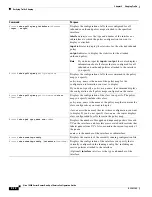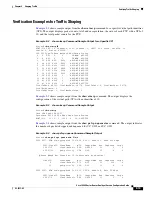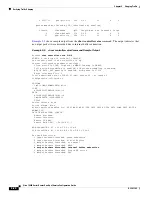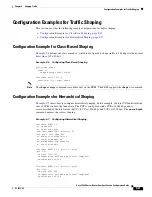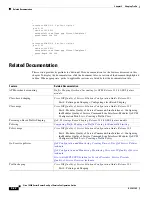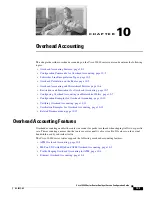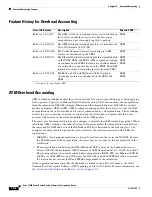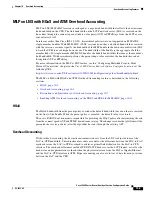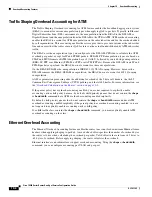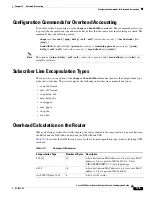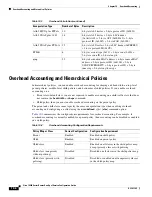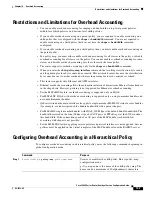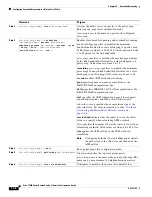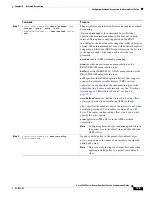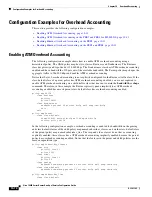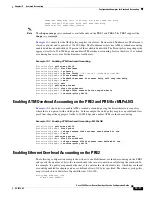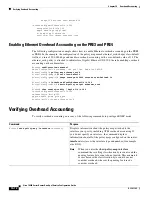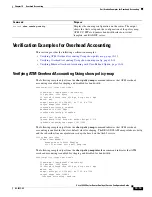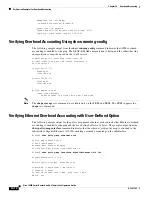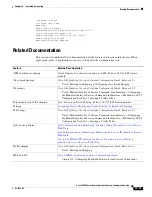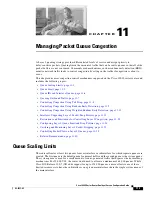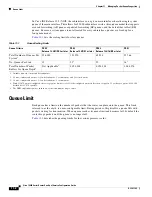
10-3
Cisco 10000 Series Router Quality of Service Configuration Guide
OL-7433-09
Chapter 10 Overhead Accounting
Overhead Accounting Features
MLP on LNS with HQoS and ATM Overhead Accounting
MLP on LNS (MLPoLNS) sessions are shaped at a negotiated bandwidth that reflects the downstream
link bandwidth on the CPE. The link bandwidth on the L2TP network server (LNS) is received on the
line either through the connect speed attribute-value pairs (AVP) or PPPoE tags from the L2TP access
concentrator (LAC).
In releases earlier than Cisco IOS 12.2(33), hierarchical policies were not supported on MLPoLNS
single-member bundles. With MLPoLNS, if LNS sessions do not have a defined bandwidth associated
with the session, users must specify the bandwidth of the MLP bundle in the downstream direction (LNS
toward the CPE) to avoid drops downstream. The bandwidth of the bundle is the aggregate of all the
member links. For single-member MLPoLNS bundles, the bundle bandwidth is the same as the member’s
link bandwidth. With hierarchical policies, the parent shape value overrides the bandwidth received
through the AVP or PPPoE tag.
For more information on the MLP at LNS feature, see the “Configuring Multilink Point-to-Point
Protocol Connections” chapter in the
Cisco 10000 Series Router Software Configuration Guide
at the
following URL:
http://www.cisco.com/en/US/docs/routers/10000/10008/configuration/guides/broadband/mlp.html
The MLP on LNS with HQoS and ATM Overhead Accounting feature is described in the following
sections:
•
HQoS, page 10-3
•
Overhead Accounting, page 10-3
•
Restrictions and Limitations for Overhead Accounting, page 10-7
•
Enabling ATM Overhead Accounting on the PRE3 and PRE4 for MLPoLNS, page 10-11
HQoS
The HQoS bandwidth from the parent policy overrides the default bandwidth (based on the rate received
on the line) of the bundle. When the parent policy is removed, the default value is restored.
The user’s RADIUS environment is responsible for providing the HQoS policy after determining the rate
from the connect speed AVP and PPPoE downstream rate tag. The changes assume that platform will be
presented the service policies (after the algorithm has run) through the existing API.
Overhead Accounting
With overhead accounting, the downstream transmission rate from the LNS is adjusted to meet the
LAC-to-CPE bandwidth. This adjustment accounts account for the difference between the LNS-to-LAC
overhead versus the LAC-to-CPE overhead to achieve optimal link utilization for the LAC-to-CPE
interface. The overhead differences include IP/UDP/L2TP headers over the L2TP tunnel, as well as the
header size and segmentation overhead when the physical interface from the LNS is Gigabit Ethernet
and the LAC-to-CPE interface is ATM. Proper accounting can also avoid loss of data from any overruns
between the LAC and the CPE.


